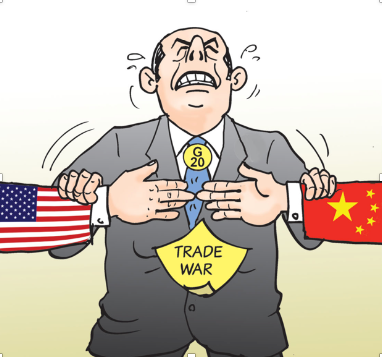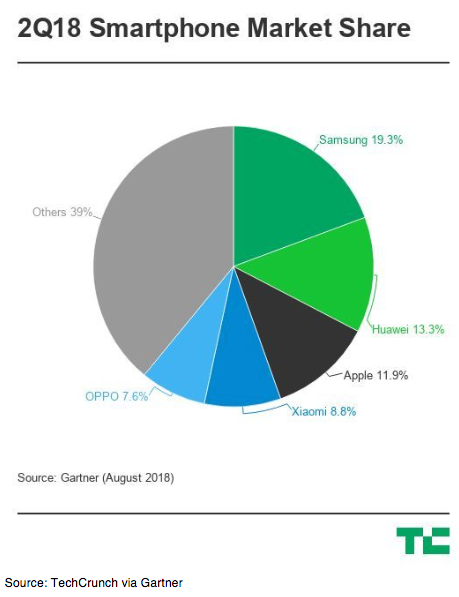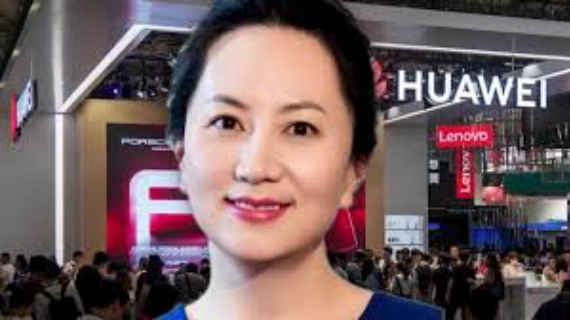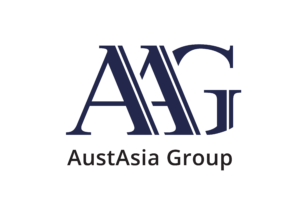President Trump and Chinese President Xi Jinping have called another “truce” on escalating the trade war (the third so far). We all know that this is a fragile peace, but the toning down is a welcome relief to markets.

So how does Huawei (pronounced “wah-way”) fit into all of this?
The Wall St Journal reported that China wants “the US to remove its ban on the sale of US technology to Chinese telecommunications giant Huawei Technologies.”
Lifting the Huawei ban is a particularly sensitive subject, given that the US has accused the Chinese tech giant of intellectual property theft and it has become the poster-child for Forced Technology Transfer (better get used to hearing this term).
What is Forced Technology Transfer (FTT)? (Yes, there is already a financial acronym for it)
FTT is a practice in which a domestic government forces foreign businesses to share their technology in exchange for market access. The method is standard in China. When a company wants to enter the Chinese market, the Chinese government can compel the firm to share its technology with Chinese companies.
There are good reasons why Huawei has become one of the focal points of the trade war. It is a leader in Artificial Intelligence (AI), it is building a massive 5G network, and it has become a dominant force among phone makers – second only to Samsung after surpassing Apple for the first time last year.

Let’s take a step back to get an overview of Huawei
Huawei is the Chinese version of Apple.
The founder and current CEO of Huawei, Ren Zhengfei, was previously an officer in China’s People’s Liberation Army, the armed forces of the Communist Party of China. The company got its start by manufacturing phone switches and then expanded in the 1990s when it built a series of telecommunications networks both in China and abroad.
Since then, the company has mushroomed in size from a regional player into a “leading global provider of information and communications technology (ICT) infrastructure and smart devices,” according to its website. The company focuses its efforts across four domains: telecommunications networks, IT, smart devices, and cloud services.
According to the company website, Huawei generated an annual revenue of more than $104 billion in US dollars last year.
Espionage Allegations
Huawei has become so big that it now sells millions of smartphones annually, prompting several countries to grow concerned that the company may use its technology to spy on customers. The fact that its CEO had been a member of the People’s Liberation Army has added to concerns of individuals and governments, who already are inclined to mistrust China’s political leadership. Huawei insists that it has no ties to the Chinese government and that it acts as an independent company.
Espionage allegations first surfaced in 2012. A US Congressional Panel concluded that both Huawei and ZTE Corporation, a rival Chinese telecom company, could pose a security threat.
In early 2018, a Senate Intelligence Committee hearing warned about potential national security threats and discouraged American companies from conducting business with Huawei and ZTE. US intelligence agencies have alleged that Huawei equipment could contain “backdoor” applications which would allow the Chinese government to spy on customers internationally. At the time of writing, no evidence of these secretive tools has been released publicly, and the company has repeatedly denied these allegations.
Since 2012, other countries have also grown suspicious that the Chinese government may be spying on customers through Huawei products. In July 2018, the UK government released a report indicating it had “only limited assurance” that the company’s telecommunications equipment would not pose a threat to the country’s security. Australia and New Zealand followed by excluding Huawei and ZTE from their 5G networks.
The arrest of Huawei CFO
Last December, Canadian authorities arrested Huawei’s Chief Financial Officer and vice-Chairwoman, who also is the daughter of the company’s CEO. Meng Wanzhou was charged with “conspiracy to defraud multiple international institutions” based on allegations that Huawei had violated sanctions against Iran, by misrepresenting a Huawei subsidiary as a separate company to evade bans.
Meng was released on bail following her arrest, then formally indicted by US prosecutors in January 2019 on counts of fraud, obstruction of justice, and misappropriating trade secrets.

US Government Orders
On May 15, President Trump issued an Executive Order banning all US companies from using the information and communications technology from any party considered a national security threat. The order also declared a national emergency related to this matter.
Although the order did not explicitly mention Huawei, it has primarily been seen as focused on them. The US Commerce Department also added Huawei and 70 of its affiliates to its existing “Entity List.” This blacklist bars anyone on it from purchasing parts and components from US companies unless they have prior government approval.
Meanwhile, the Chinese have threatened to blacklist US companies, which could smash the business of the likes of Apple, FedEx, and so on.
Since the G20 meeting in Osaka, the US has eased restrictions on some Huawei component purchases.
In Conclusion
The resistance that Huawei is facing in the US is part of a broader battleground, in which the Chinese telecom giant is facing rising opposition from many foreign governments and customers, concerned about Huawei’s links to the Chinese government.
Remember, the trade war with China is very much about intellectual property, trade secrets, and Forced Technology Transfer.
In writing this report, we have sourced information from the following providers, including but not limited to:
Aberdeen Standard Investments, AMP Capital Markets (including Dr Shane Oliver, Chief Economist and Head of Investment Strategy), ANZ Capital Markets, Australian Bureau of Statistics, BetaShares, Bloomberg, Business Insider, Colonial First State, Commonwealth Bank, Investopedia IRESS, Investopedia Livewire Market Watch, Investopedia Macquarie, Morningstar, Montgomery Investment Management, Peter Switzer, Reserve Bank of Australia, Russell Investments and VanEck.
Important information and disclaimer
This publication has been prepared by AustAsia Group, including AustAsia Financial Planning Pty Ltd (AFSL License No 229454) and AustAsia Accounting Services Pty Ltd (Registered Tax Agent No 7587 3005).
AustAsia Accounting Services Pty Ltd – Liability limited by a scheme approved under Professional Standards Legislation.
Any advice in this publication is general only and has not been tailored to your circumstances. Accordingly, reliance should not be placed on the information contained in this document as the basis for making any financial investment, insurance, or other decision. Please seek personal advice before acting on this information.
Information in this publication is accurate as at the date of writing, 10 July 2019. Some of the information may have been provided to us by third parties. While it is believed the information is accurate and reliable, the accuracy of that information is not guaranteed in any way.
Opinions constitute our judgement at the time of issue and are subject to change. Neither the Licensee nor any member of AustAsia Group, nor their employees or directors give any warranty of accuracy, nor accept any responsibility, for any errors or omissions in this document.
Any general tax information provided in this publication is intended as a guide only and is based on our general understanding of taxation laws. It is not intended to be a substitute for specialised taxation advice or an assessment of your liabilities, obligations or claim entitlements that arise, or could arise, under taxation law, and we recommend you consult with a registered tax agent.



